Latest science news: Northern lights | Hongqi bridge collapse | New Glenn launch
Wednesday, Nov. 12 2025: Your daily feed of the biggest discoveries and breakthroughs making headlines.

Ben and Al steering the ship today while Patrick is off investigating dinosaurs. Here's the biggest science news you need to know:
- Northern lights were seen as far south as Florida last night after the most powerful solar storm of the year sent an outburst of plasma barrelling toward Earth. More auroras are expected this evening.
- Dramatic footage shows the moment a section of the newly opened Hongqi bridge collapsed in China's Sichuan province.
- Blue Origin's second attempt to launch the New Glenn rocket takes place this afternoon at 2:50 p.m. EST.
Latest science news
Bumblebees learn to code

The internet has spent years taunting us journalists to learn to code. Now, in a shocking betrayal, scientists and bees have beat us to it.
In a first-of-its-kind study, scientists have trained bumblebees to read rudimentary Morse code signals to find sugary rewards. It demonstrates an impressive neurological capacity among insects for sensing timing, and could mean that evolution has hard-wired their tiny brains for decoding simple codes — there’s hope for journalists yet.
Comet 3I/ATLAS is blasting out radio signals. Here’s why that’s proof it’s not aliens.
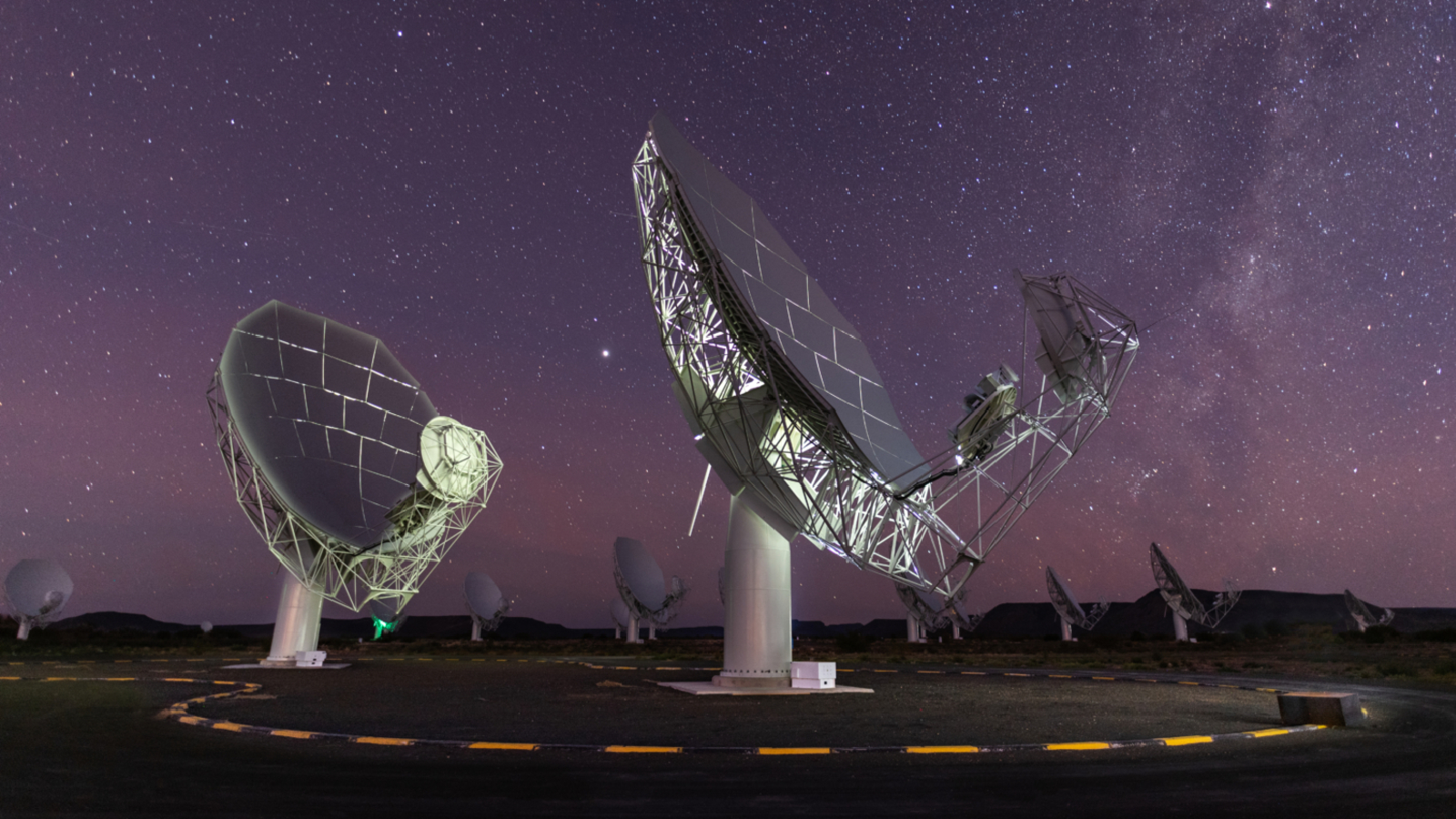
I signed off yesterday promising an update on the comet 3I/ATLAS, so here it is.
Astronomers at South Africa's MeerKAT radio telescope have detected the first radio waves emanating from the interstellar visitor. Read that sentence alone and click away from this blog, and you might think it’s further evidence that the comet is a trojan horse stuffed to the brim with little green men.
But alas, the signal is actually further evidence that the comet is perfectly natural in its origins.
Why? Check out Senior Staff Writer Harry’s full story for the lowdown.
Auroring good time
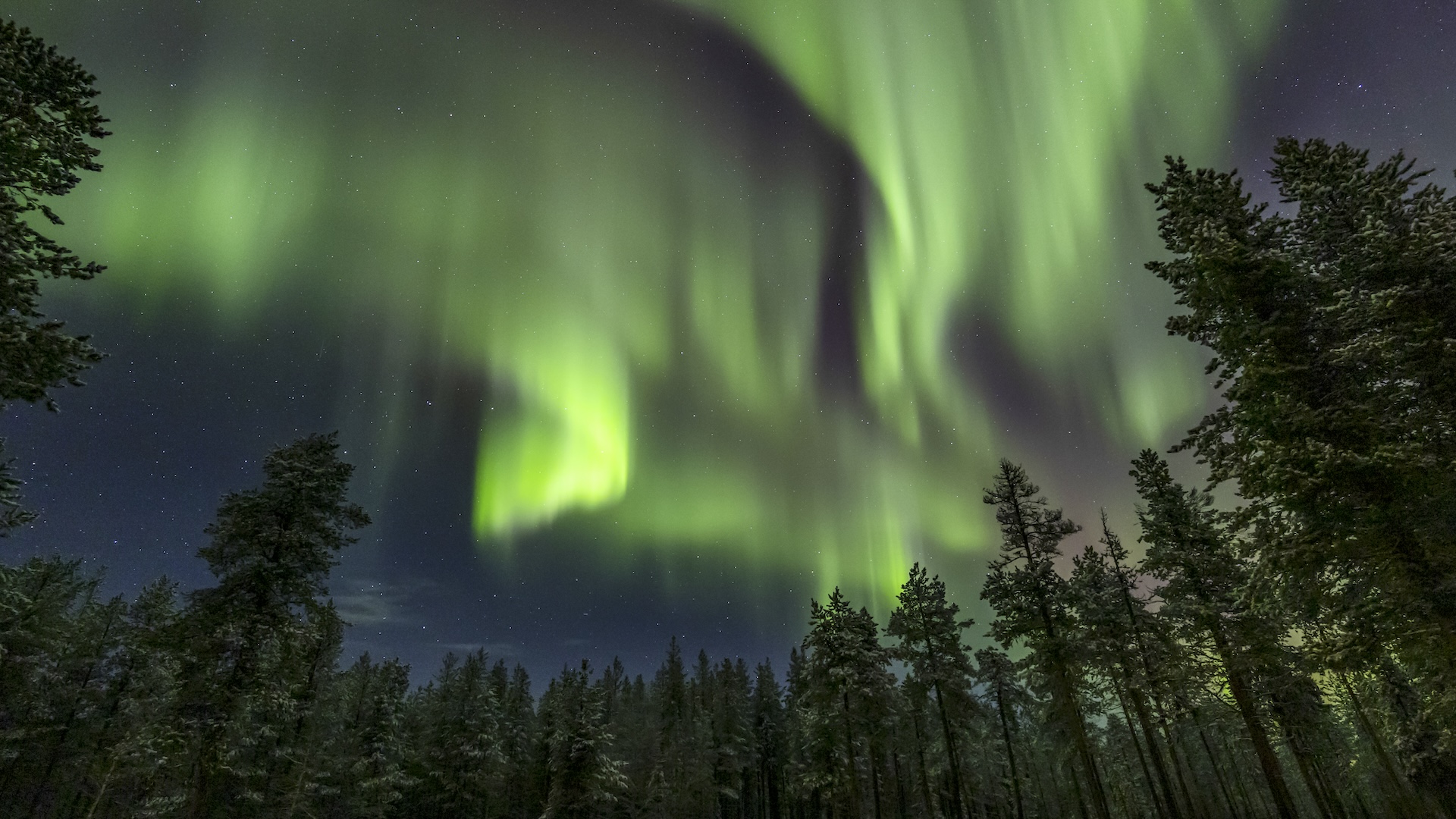
Good morning, science fans. For those of you chasing auroras all night, we hope you got some rest. We blogged about the solar eruptions barrelling into Earth’s magnetosphere here yesterday, but it turns out they were triggered by the most powerful solar flare of the year.
As three solar outbursts (or coronal mass ejections if you want to make them sound fancy) continue to spark geomagnetic storms, we’re set to see the northern lights as far south as northern California and Alabama tonight.
If you take any pictures of the lights and would like to share them with us, give us an email here. In the meantime, check out the full story here.

Over and out
It's time for the UK side of Live Science to retire for the day. Keep your eyes on the site for one more 3I/ATLAS update coming soon. And until tomorrow!
The reports of 3I/ATLAS's death are greatly exaggerated
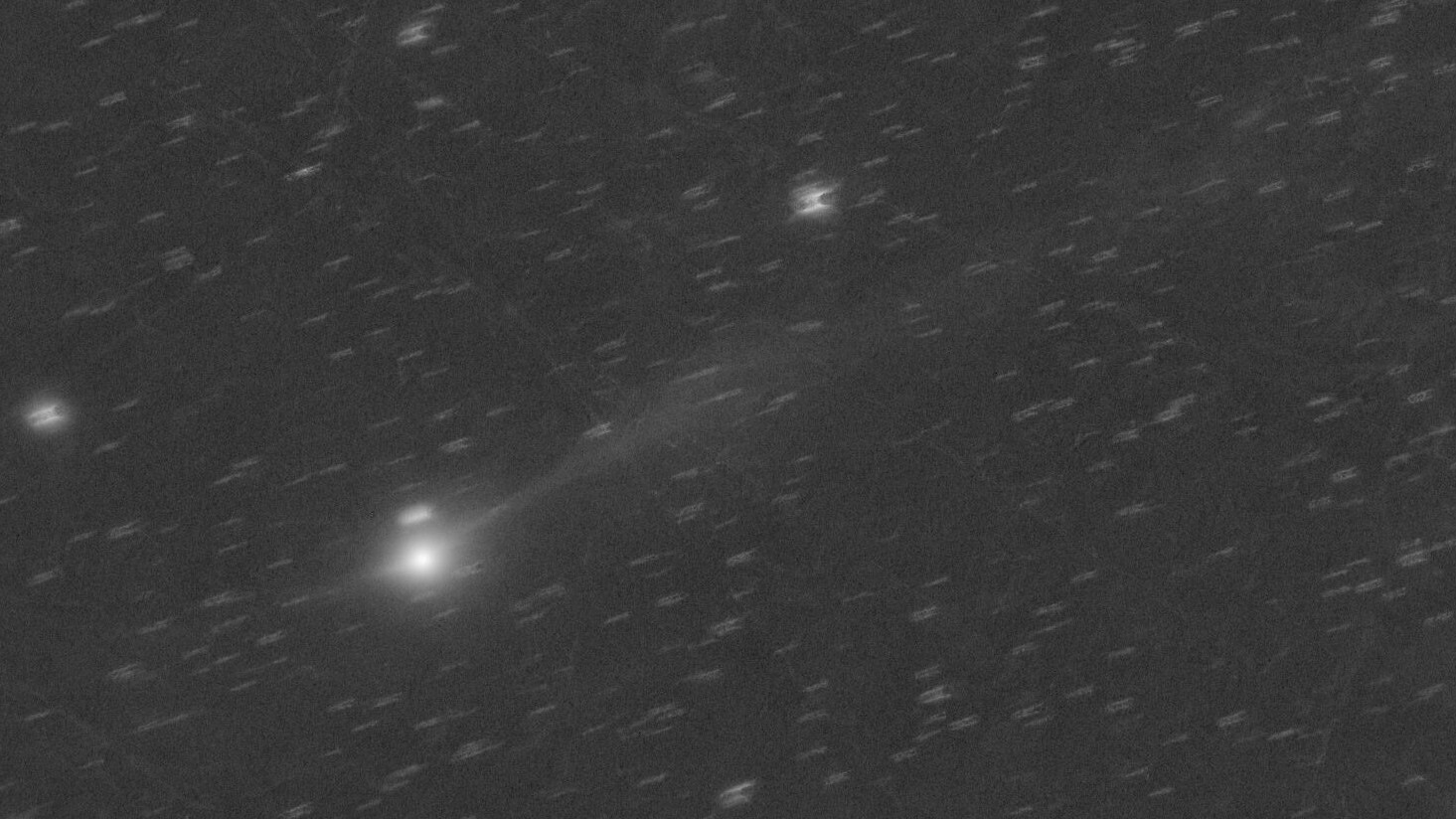
Has 3I/ATLAS exploded after a fatal near-encounter with our sun? Not at all, Patrick learned today. But that won't stop some claiming otherwise. With the comet's closest point to Earth coming on Dec 19. we're readying ourselves for a long end to the year.
Read the full story here.
Manifold Destiny

On this day 22 years ago, a Russian mathematician uploaded a scientific paper to a public server that quickly sent the world loopy.
His name was Gigori Perlman, and the paper he submitted was the first of three that solved the Poincaré conjecture — a famously-intractable hypothesis made by Henri Poincaré nearly a century before.
Perlman’s contribution proved essential for topology, the mathematical study of shapes, and earned him the prestigious Fields Medal and the Clay Millenium math prize.
Yet he turned both down, and seemingly left the field permanently due to his disillusionment with the vanity of his fellow mathematicians. When a reporter attempted to contact him in 2010 he responded: "You are disturbing me. I am picking mushrooms."
You can read the full story here.
Cause for COP-timism

Climate deliberations continue at this year’s COP 30 conference in Belem, Brazil, in spite of some notable absences that include President Donald Trump. Here’s a breakdown from Carbon Brief on what each country’s negotiators are angling for at the conference.
If all the legal wranglings over the fate of our planet feel a little dispiriting, here’s a shot of good news: China, the world’s biggest polluter, has seen its CO2 emissions flat or falling over the past 18 months, meaning it could hit its emissions peak far ahead of schedule.
Leonid meteor shower set to peak
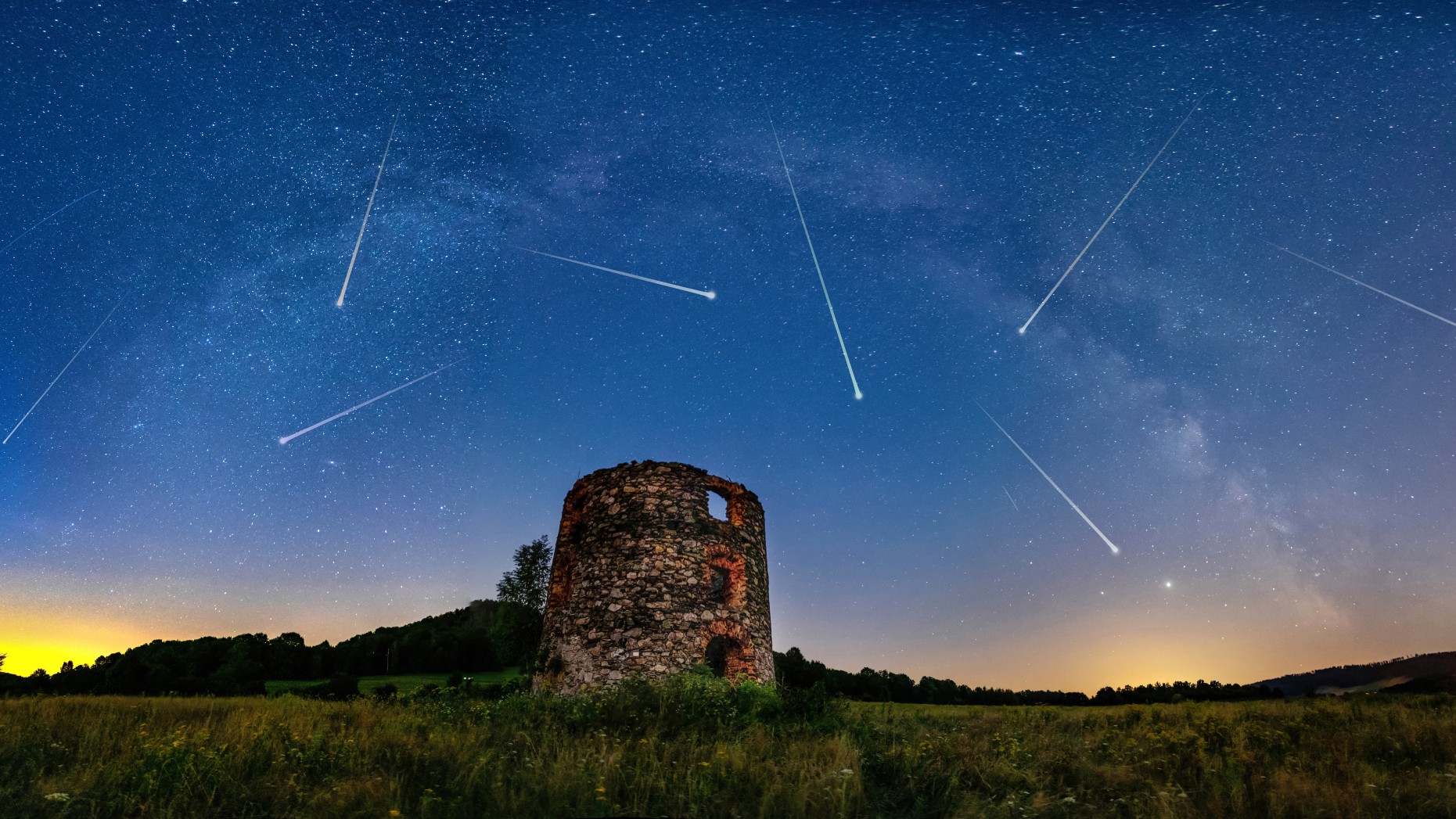
Save all your wishes for next week, when the Leonid meteor shower peaks.
The annual flurry of shooting stars will appear in the early hours of Monday (Nov. 17), and is produced by tiny particles from the Comet 55P/Tempel-Tuttle that burn up in Earth's atmosphere to make meteors.
This year could offer one of the best viewing windows for the fast-moving shower, owing to a nearly moonless night.
You can read the full story here.

Live Science roundup
Here's a roundup of the stories Live Science has published today (so far).
—For the first time, physicists peer inside the nucleus of a molecule using electrons as a probe
Researchers have studied how magnetism is distributed within a radioactive nucleus for the first time by poking around inside a rare molecule.
—This week's Leonid meteor shower could be one of the best in years. Here's why.
Let's get ready for meteors!
A new kind of processor that uses microwaves instead of conventional circuitry. Fancy!
—Prehistoric Jomon people in Japan had 'little to no' DNA from the mysterious Denisovans, study finds
The Jomon people of prehistoric Japan had lowest levels of Denisovan DNA of all ancient and modern East Asian people. Find out what that means.

Cannibal solar storm on its way

What’s more exciting than one coronal mass ejection? One eating the other, of course.
Coronal mass ejections (CMEs) are large, fast-moving clouds of magnetized plasma that occasionally get spat out into space by the sun alongside solar flares — powerful explosions on our star’s surface triggered when solar magnetic loops snap in half like an overstretched elastic band.
A cannibal CME is created when one CME is followed, and swallowed, by a second faster one to create a single, massive wave of plasma.
That’s what could happen this Wednesday (Nov. 12) according to Spaceweather.com, as two CMEs are on their way to Earth right now. They will likely bring a strong geomagnetic storm and auroras above our skies.
Running AMOC

It’s a simple rule that as you get further away from the equator, your climate gets colder.
Yet not everywhere follows this trend. Take Western Europe for example: New York City and Madrid lie along roughly the same latitude, yet Madrid’s average January temperatures are ten degrees Fahrenheit (5.6 Celsius) hotter than those of the Big Apple.
So what gives? The answer lies in a web of warm ocean currents called the Atlantic Meridional Overturning Circulation (AMOC) that sustains Europe’s high temperatures, yet is showing troubling signs of weakening and even collapse sometime this century.
You can read the full story here.
New Comet approaches
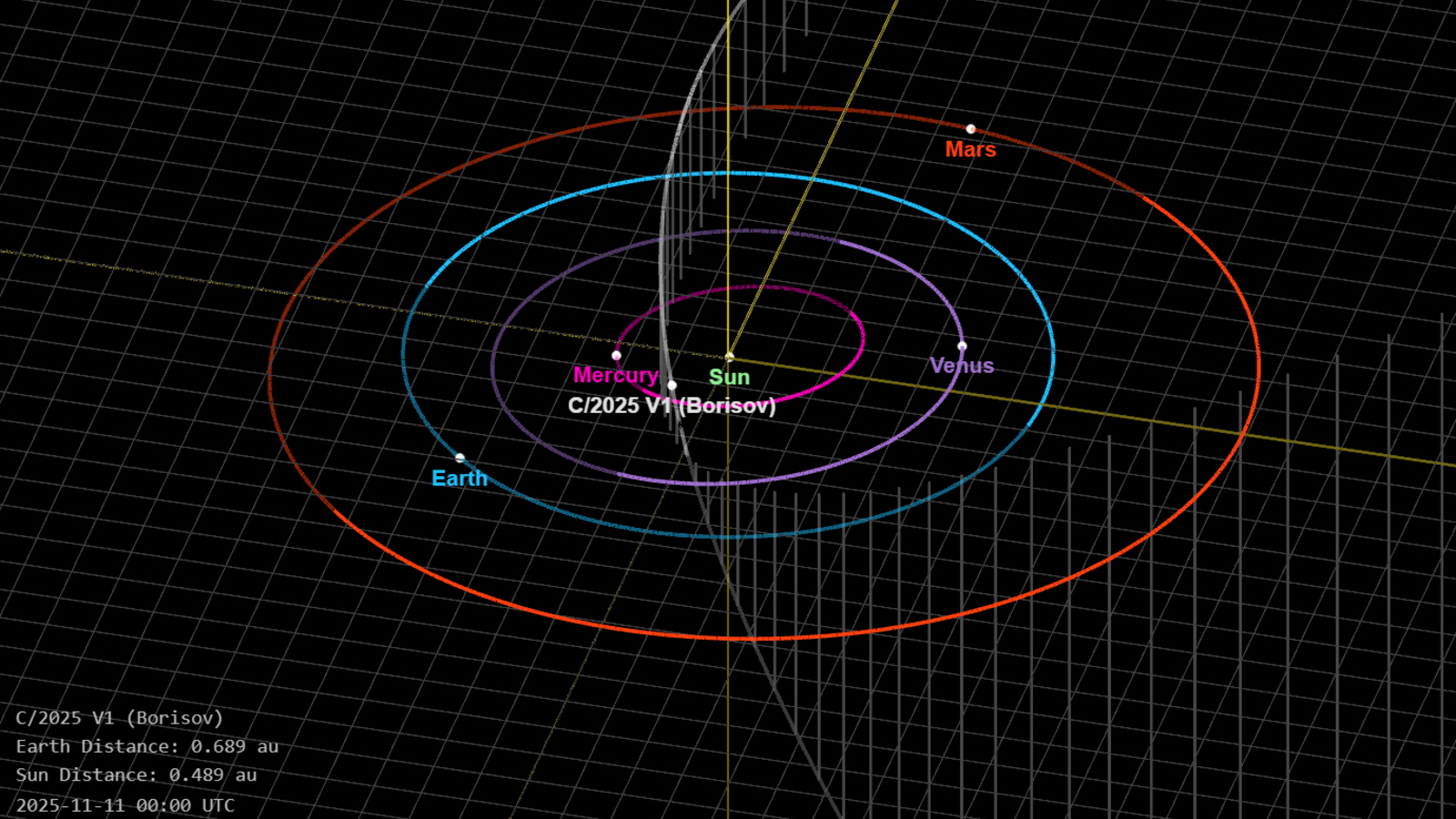
Good morning, science fans! We’re back again with fresh comet news, this time relating to a new space snowball. Before you ask, it’s not Comet 3I/ATLAS (although we are working on an update on that too).
Called C/2025 V1 (Borisov), this new comet has a high eccentricity, a vanishing tail and is due its closest flyby of Earth today. Unlike 3I/ATLAS, C/2025 V1 does not come from interstellar space, but is believed to originate from the Oort cloud — the icy sphere of debris that surrounds our solar system.
You can read the full story here.

That's all, folks!
It's curtains for us again on the UK side, but stick with our US colleagues for all your science news stories. See you tomorrow!

Canada loses its measles elimination status

Hi everyone, it's Nicoletta, Live Science's Health Editor, here with an update that Canada has just lost its measles elimination status. Measles has been spreading consistently in Canada for over a year, resulting in the announcement made today by health officials.
Measles can be deadly: it kills between 1 and 3 out of every 1,000 children infected. But even those who survive the infection can suffer long-term consequences, from "immune amnesia" to permanent brain damage to a rare progressive condition that puts them into a coma from which they never awake.
The good thing is that we have extremely effective vaccines for measles that prevent both the infection itself and its dangerous knock-on effects. The bad thing is that rates of routine measles vaccinations are trending down, and as a predictable consequence, cases of measles are going up.
Canada's announcement is a reflection of this global trend, which is being driven both by rising anti-vaccine sentiment and by disruptions to routine childhood vaccination triggered by the COVID-19 pandemic, among other factors. The United States has also seen persistent declines in routine vaccination in recent years, and in turn, large outbreaks of measles, raising questions about the stability of its own measles elimination status.
At the end of the day, the takeaway is that measles is a highly preventable illness that causes a great deal of suffering when it's allowed to take hold. The measles vaccine represents a triumph of medical science that helped drive down the staggering rate of child death that existed prior to its introduction. Declines in measles vaccination signal a return to a time when a lot more kids died in early childhood than do today — and that, in a word, is concerning.
Read the full story here.

New 'almost interstellar' comet approaches Earth

Hello! Senior Staff Writer Harry Baker here. I've been covering the infamous alien comet 3I/ATLAS a lot since it was first discovered in early July, so I was surprised to hear of a new "almost interstellar object" that is due to make its closest approach to Earth tomorrow (Nov. 11), especially when some people were speculating that it could be an alien probe.
For the record, this newly discovered comet, dubbed C/2025 V1 (Borisov), is definitely NOT an interstellar object (ISO). But it does share a few similarities with 3I/ATLAS, including a high eccentricity and a vanishing tail. As for it being an alien spacecraft, even renowned alien-hunter Avi Loeb — who has been promoting this theory for months — says that it is unlikely.
And in a completely unrelated coincidence, the new comet was discovered by Gennadiy Borisov, who also discovered the second-ever ISO and 3I/ATLAS's predecessor "Comet Borisov" in 2019.
Check out the full story here.

Cosmically, we may have already peaked
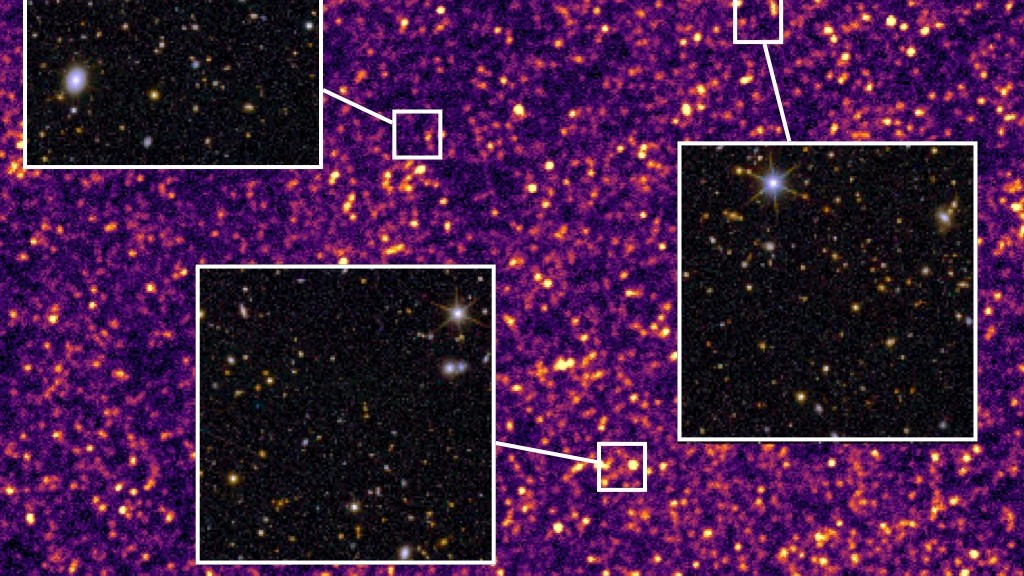
It’s good to be in something from the ground floor, but humanity may have come too late for that. Or that’s at least the latest from the Euclid and Herschel telescopes, which have found that star formation has already peaked in our cosmos.
By taking the most comprehensive temperature reading of our universe yet, the space telescopes revealed that galaxies have grown slightly cooler as their star formation rates eased off over the past 10 billion years.
That means that our universe is on course to becoming totally quenched. But before any of us spiral into existential crisis, it won’t be for an unimaginably long time. In the meantime, we can all get therapy, or maybe just feed the ducks.
You can read the full story here.
Comet sense?
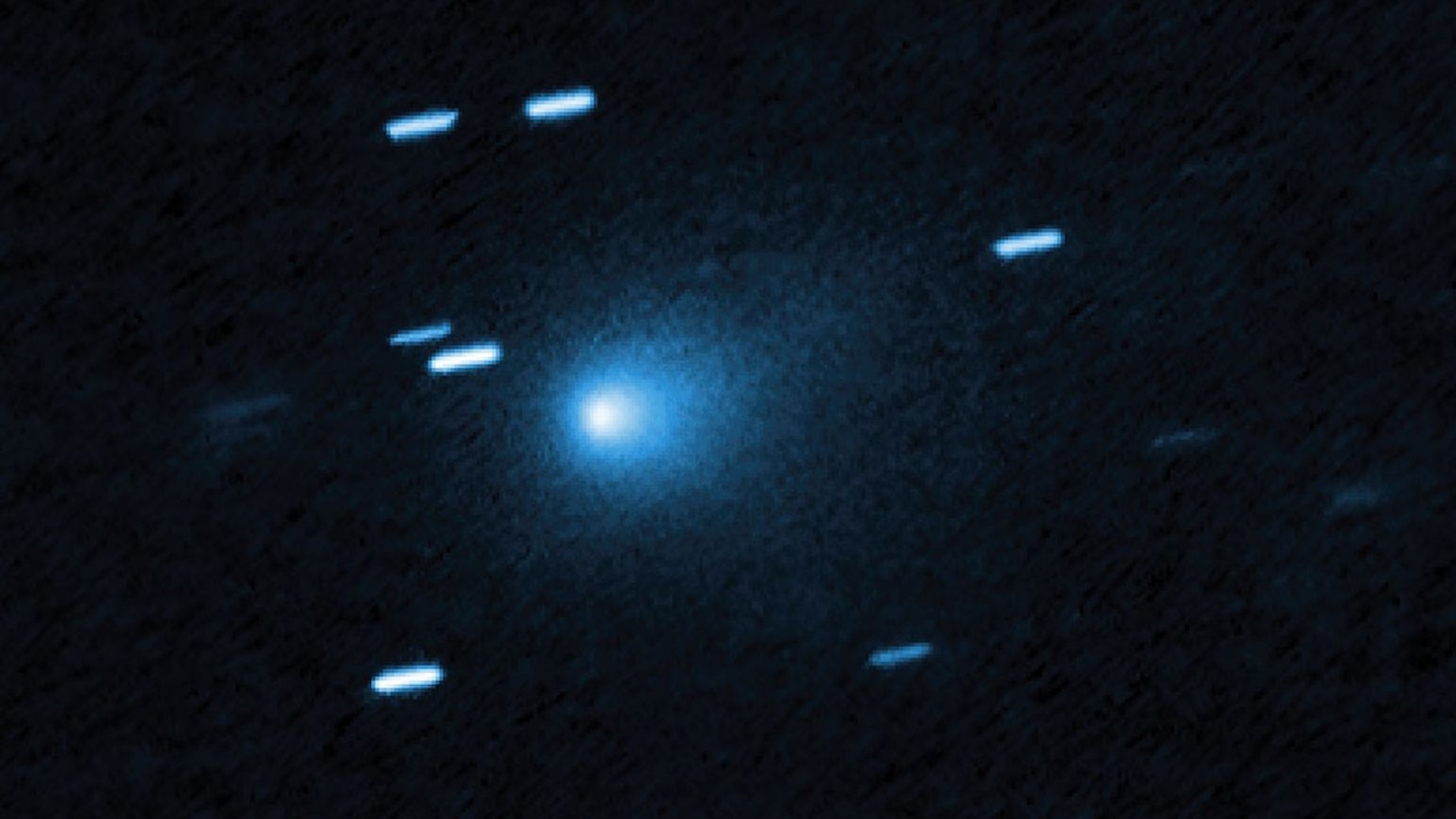
Seems like pretty much everyone wants fresh updates on Comet 3I/ATLAS these days.
Wait…. what’s the tea on 3I Atlas?!?!!!!!!!?????October 30, 2025
Our solar system’s third-ever recorded interstellar visitor is fascinating — at more than 7 billion years old it’s so irradiated that we may never be able to pin down exactly where it came from. But the question on everyone’s lips, and in our inboxes, is whether or not it’s an alien probe.
I’d really love to tell you otherwise, but the answer from most scientists is no, almost definitely not.
You don’t have to take that from me, though. Here's an article by radio astronomer Laura Driessen on why extraterrestrial speculation is the least interesting question about this truly strange comet.
You can give the story a read here.

COP30 kicks off

The opening ceremony of COP30 has wrapped up in Belém, Brazil. You can watch it here. It wasn't like an Olympic opening ceremony or anything like that — not one singing headless Marie Antoinette in sight. Still, there were a couple of impassioned speeches and traditional musical performances.
Most importantly, this year’s major climate conference is officially underway. Simon Stiell, the UN Climate Change Executive Secretary, highlighted the progress humanity had made since the signing of the Paris Agreement 10 years ago at COP21, during which world leaders promised to limit global warming to preferably below 1.5 degrees Celsius (2.7 degrees Fahrenheit) and well below 2 C (3.6 F). However, as the UN announced last week, we're still expected to overshoot the 1.5 C target.
"We must move much, much, faster on both reductions of emissions and strengthening resilience," Stiell said. "The science is clear: we can and must bring temperatures back down to 1.5C after any temporary overshoot. Lamenting is not a strategy. We need solutions."
Stiell will be looking for countries to collaborate on those solutions this week, but as Ben noted this morning, many leaders are no-showing this year's conference. Among the notable absentees are President Donald Trump, China's Xi Jinping and India's Narendra Modi — the heads of the three biggest emitting countries.
In case you missed it
Here's a roundup of the stories Live Science published over the weekend, minus the ones we've discussed here.
—Ram-shaped teapot from ancient Canaanite cult discovered near ancient city of Armageddon
A very interesting teapot.
—Antibiotic found hiding in plain sight could treat dangerous infections, early study find
Scientists have discovered a new antibiotic compound that shows promising activity against drug-resistant infections, so that's good.
—NASA’s ultraquiet supersonic 'flying swordfish' makes history with first test flight
NASA has unveiled an experimental supersonic plane that looks like a swordfish. Swordfish are among the fastest animals in the ocean, but their commonly cited swimming speeds are very unreliable. NASA's new plane reached a top speed of about 240 miles per hour (386 kilometers per hour).
A terrifying, but potentially very useful, walking chair.
—How to watch 'Kingdom' — TV and streaming details for David Attenborough's new BBC series
New nature series narrated by the 99-year-old Sir David Attenborough.

Mysterious Andean holes explained

Some 5,200 holes sit in ordered grids along southern Peru’s Serpent Mountain, many of them dating back more than a thousand years. So what could explain them? Long-forgotten rituals? Fog capture technology? Human sacrifices? Aliens?
A new suggestion made by archaeologists posits that the real answer isn’t quite that exciting (although it’s still pretty cool): The holes were likely used as accountancy tools in barter markets for goods along trade routes.
You can read the full story here.
Giza break

Two voids found on the eastern side of Egypt’s Pyramid of Menkaure could point to a second entrance to the ancient tomb, tests that used electrical currents and ultrasonic waves have hinted.
You can check out the full story here.
The weekend’s biggest news
We can’t always bring you breaking science news as it happens — sometimes our loved ones, days off and sleep schedules get in the way. Here’s some of the biggest science news that happened over the weekend:
- A powerful 6.9 magnitude earthquake rattled the northern coast of Japan on Sunday (Nov. 9). Thankfully, there have been no immediate reports of injuries or damage, no abnormalities at the two nuclear power plants in the area, and a tsunami warning following the quake was downgraded.
- Health officials are investigating 13 cases of infant botulism across 10 states linked to a recalled baby formula.
- Blue Origin's New Glenn rocket was scheduled for launch on Sunday (Nov. 9) but it has been delayed until Wednesday (Nov. 12) due to poor weather conditions. The launch will be the first big test for the rocket’s first NASA mission, and a statement of intent for the company’s founder Jeff Bezos against competitor SpaceX.
Monkey business is closed

Two weeks ago, Patrick covered news of several lab monkeys that escaped from an overturned truck in Mississippi that were allegedly diseased and dangerous.
On Friday night, we finally got news that the last of these monkeys has been tracked down following a report from a resident whose dog alerted her to its presence. Five of the escaped rhesus macaques were sadly killed by police, yet authorities say that this monkey was "successfully recovered."
Good COP, bad COP

Good morning, science fans! Ben here, back for another round of updates on the latest science updates from around the world.
While we're speaking of the pale blue dot that we call home, it's in a spot of trouble due to human-caused climate change, as it speeds toward near-certain overshoot of climatic guard-rails set by 2015's Paris Agreement. That's why delegations from 194 countries are meeting in Brazil for the UN's COP30 conference, making yet another attempt to forge better plans to stay within the agreement's limits and phase out fossil fuels.
This year's conference promises to be particularly contentious, with many leaders being no-shows and the Trump administration having exited the process entirely.
Where that leaves this conference is entirely unclear: Brazil insists that this year's conference will be one of "implementation", whereby countries focus on what they can contribute toward real-world impacts instead of striving toward longwinded, often defanged, consensus. Whether that means some countries can get away with contributing very little, and what can be done to counteract this, remains unclear.

